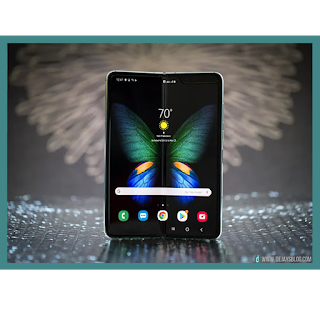So just as any new piece of technology starts out bumpy and unreliable, so has Folding Technology. From Royal Flex Pie to the Huawei Mate X and Samsung Fold, none of these devices have been close to perfect or even reliable in some cases due to their issues. It is not surprising though as this is characteristic of any first-gen device.
Let's look at the most popular folding device around, the Galaxy Fold. One might argue that its failure at the beginning is the reason for its popularity. Not because it stands out from other folding devices, but whether that is true or not is left for you to decide. The ease at which it would “break” made it unusable on a day to day basis. Samsung had to take some time to review their product and come up with a more robust version. The Fold was still not as perfect as the crease in the middle made the device look unappealing. One may wonder if that is really a flaw as the crease though not visually appealing, does not really affect the functionality of the device. But gone are the days when devices were used just because of what they can do.
Have you ever wondered why tech companies collaborate with models and celebrities to help promote their products? One major reason is that smartphones are now more fashionable than ever. Smartphones have reached a point where they all look like rectangular glass slabs with basically the same internals. So the aesthetic appeal of smartphones is now very important. Thus companies have to come up with unique color combinations and or variations of their products to stand out.
What about the Razr? Well, even though its hinge mechanism was praised in the beginning, further testing has shown its fragility. But this is a good thing when you look at the bigger picture. How can devices "breaking" and losing functionality be a good thing?
Let's take one more look at Samsung. They are now working on the next folding device to be released very soon. However, one important thing is that they learned from the shortcomings of the first fold and are trying to better the next. Example, unlike the first device where a plastic material was used for the screen, a thin glass material is now used in place. Such a development would not have been discovered if the first Fold did not exist.
So with every generation, an improvement will be made until we get to the point where foldable devices are standard.
Let's take one more look at Samsung. They are now working on the next folding device to be released very soon. However, one important thing is that they learned from the shortcomings of the first fold and are trying to better the next. Example, unlike the first device where a plastic material was used for the screen, a thin glass material is now used in place. Such a development would not have been discovered if the first Fold did not exist.
So with every generation, an improvement will be made until we get to the point where foldable devices are standard.
This has been the same for the devices we use today. It took years of fine-tuning to get them where they are today. Smartphone innovation has been stagnant in the last few years in comparison to the years before. We are entering a new era, the era of foldable devices. Some foldable devices, including all screen foldable laptops, will become mainstream. But this will take time!
The point is, technology is incremental and every “break” leads to something better. So folding tech is not great yet, but that is just fine!




